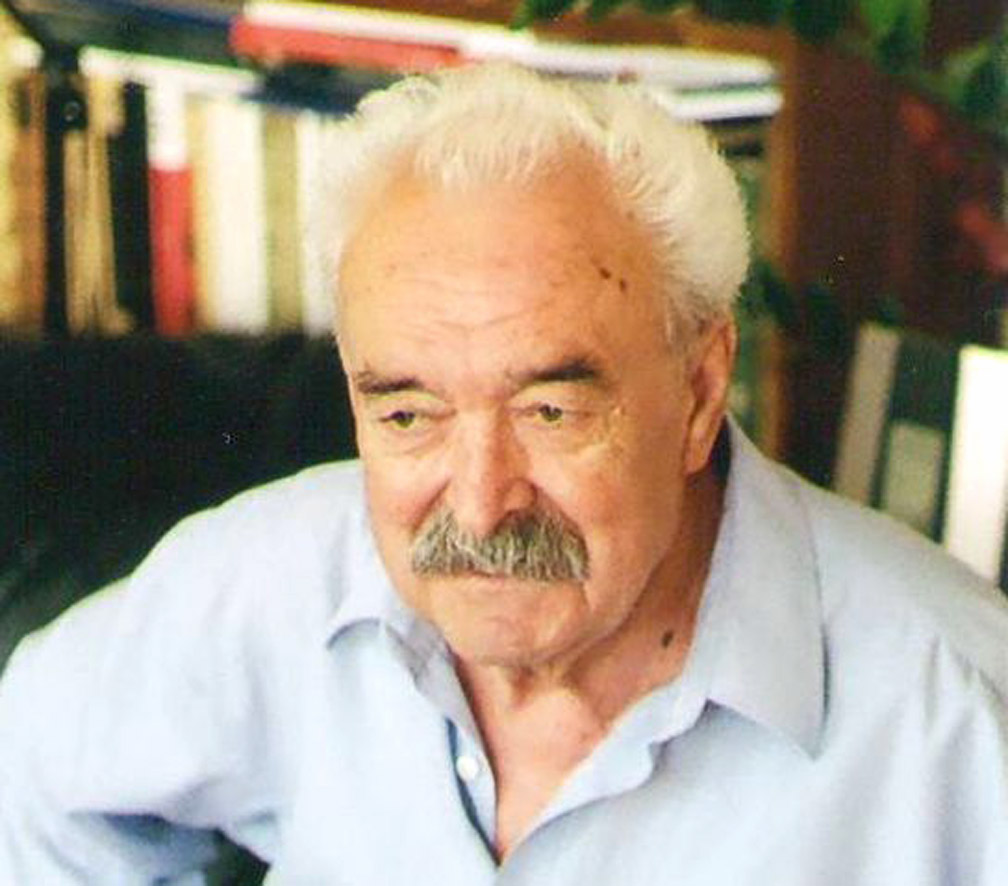Rezső Szabó (*10 May 1929 in Klížska Nemá, Hungarian: Kolozsnéma, district Komárno) is a Hungarian lawyer and politician from Slovakia. He attended a secondary school in Komárno and graduated in 1952 at the Faculty of Law of Comenius University in Bratislava. 1951 he started working for the Czechoslovak Hungarian Workers’ Cultural Association (in Hungarian: Csehszlovákiai Magyar Dolgozók Kultúregyesülete, in Slovak: Kultúrny zväz maďarských pracujúcich v Československu, abbreviation: CSEMADOK). In 1954–1969 he was a Secretary of CSEMADOK, and in 1959-1961 the editor-in-chief of the weekly cultural magazine Hét published by CSEMADOK. As a leading representative of the Hungarian minority and a longstanding member of the Communist Party of Slovakia (KSS) he held, along with the important and politically sensible position of the CSEMADOK Secretary, different other offices. He was a member of the Slovak National Council (Slovenská národná rada, SNR) and one of its vice chairmen (from 29 December 1968 to 28 April 1970). In 1968 he is mentioned as a KSS Central Committee member. After the federation was introduced in Czechoslovakia, SNR nominated Szabó for the Czechoslovak parliament (Federální shromáždění – Federal Assembly), and he was a member of its Chamber of the Nations (Sněmovna národů) from 1 January 1969 to 25 November 1971 (he resigned on 7 October 1971). 1971 he was dismissed from both KSS and CSEMADOK. From 1971 to 1974 he was a manual worker, from 1975 to 1990 he worked as a company attorney. In 1990 he got involved in politics again, and he co-founded the Hungarian Christian Democratic Movement and the Együttélés-Spolužitie [Coexistence] political movement. Between 1990 and 1992 he was a member of the Slovak National Council for Együttélés-Spolužitie (cf. Fazekas, József and Péter Hunčík, eds. 2008. Maďari na Slovensku (1989–2004). Súhrnná správa. Od zmeny režimu po vstup do Európskej únie. [Hungarians in Slovakia. General report. From the change of regime till the EU accession] Translation of: Magyarok Szlovákiában (1989–2004). Összefoglaló jelentés. A rendszerváltozástól az európai uniós csatlakozásig (2004). Šamorín: Fórum inštitút pre výskum menšín, 63, 113).
The political history of the Hungarian ethnic minority in Slovakia is reflected to a large extent in Rezső Szabó’s life story. After the communist takeover in 1948 it was important for the regime to integrate the Hungarians in Slovakia into the social and political life. CSEMADOK was founded to fulfil this aim, and to “popularize the policies of the Communist Party in the Hungarian minority” (Fazekas and Hunčík, 45). In 1956 CSEMADOK supported the official Czechoslovak standpoint condemning the anticommunist and anti-Soviet revolution in Hungary. The political thaw in the 1960s, however, influenced also the atmosphere in CSEMADOK, and Rezső Szabó became one of the leading figures of this process (and also its chronicler, cf. Szabó, Rezső. 2004.
A Csemadok és a Prágai Tavasz. Beszélgetések, cikkek, előadások, dokumentumok [CSEMADOK and Prague Spring. Interviews, articles, lectures, documents]. Bratislava/Pozsony: Kalligram, 2004). His personal collection (inventory accessible: adatbank.sk/egyeni-hagyatekok/szabo-rezso-iratai. Accessed 3 January, 2018) documents the intellectual and legislative activities in 1967 to 1969, which aimed at an qualitative change of the constitutional position of ethnic minorities. These minorities meant, primarily, the Hungarian minority (the working documents from that time use even the term “národnostná samospráva” – “ethnic authonomy”), but also the “constitutional status of the Ukrainian minority” was discussed, involving the uneasy issue of Ruthens/Rusyns living in Czechoslovakia. These activities had to be conducted delicately, so as not to be codemned as particularist deviations from the democratization efforts in both society and the Party (cf. Szakál, Gyula. 1997.
Túlélési stratégiák, hatalmi manipulációk a szlovákiai magyarság körében (1957-1990) [Survival strategies and manipulation through political power among the Hungarians living in Slovakia]. Bratislava/Pozsony: Nemzetiségi Dokumentációs Centrum, Budapest and Győr: Magyar Tudományos Akadémia Politikai Tudományok Intézete). Through the liberalization of the social climate, also a revival of confrontation between Hungarian and Slovak nationalist standpoints was, unfortunately, also made possible (cf. Popély, Árpád. 2008.
1968 és a csehszlovákiai magyarság [The year 1968 and the Czechoslovak Hungarians]. Šamorín/Somorja: Fórum Kisebbségkutató Intézet). The policy developments concerning the minorities culminated in 1969, in connection with the introduction of the Czechoslovak federation, which promised more autonomy to Slovaks. The federation remained in force under the “mercy” of the Soviets, although in reduced and emptied form. The reform of the minorities’ status was cancelled, and their protagonists, including Szabó, were persecuted. They returned in 1990 to the political scene, but the positions of Slovak Hungarians have since been determined by younger politicans, such as Miklós Duray.

